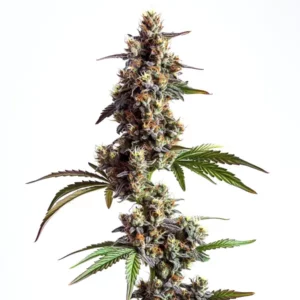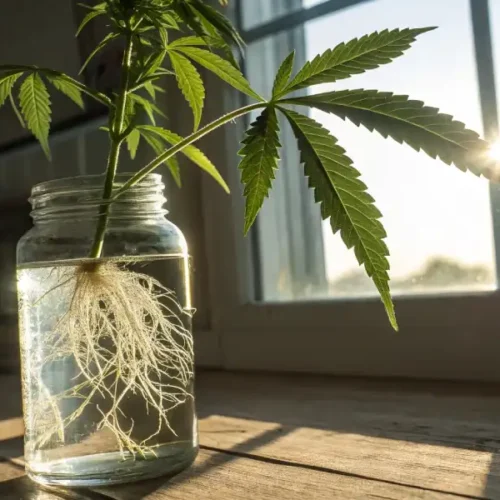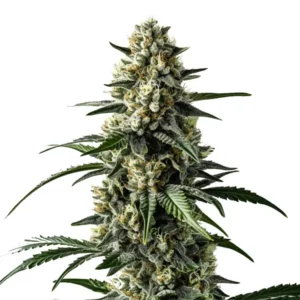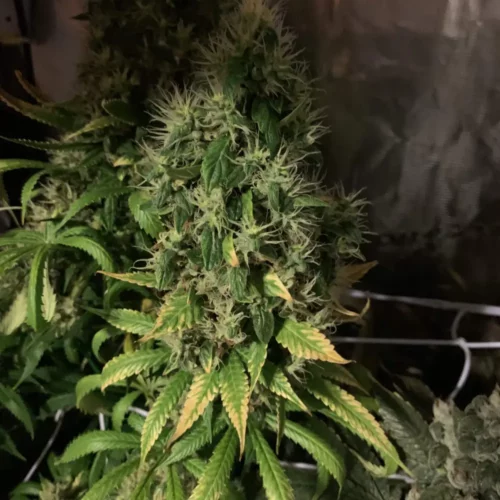Most people enjoy mangoes for their delicious taste, but some consume them hoping to enhance their cannabis high. Yes, you read that correctly. There’s a belief that mango cannabinoids can amplify the effects of cannabis, providing an even more intense high.
In theory, mangoes and cannabis share several key compounds, but do mangoes really increase the intensity of a cannabis high?
This tropical fruit, rich in antioxidants, helps combat the munchies and alleviates dry mouth, but some claim it’s essential for enhancing a high. Read on to find out more.
What Do The Experts Say About Mango and Cannabinoids?
While there are no definitive scientific studies on the topic, some experts believe that mangoes could enhance the effects of cannabinoids found in cannabis.
Mango and Terpene Myrcene
To refresh your memory, cannabis strains consist of more than just cannabinoids. In fact, their phytochemical composition includes a variety of compounds, such as terpenes.
Spray terpenes are aromatic organic compounds found in many plants, including marijuana. They are responsible for the unique aroma and flavor of each cannabis strain and are believed to have medicinal and psychoactive properties. Some enthusiasts even explore combinations like mango cannabinoids with terpenes to potentially enhance effects and flavor profiles.
Different cannabis strains contain varying concentrations of terpenes, with some of the most common being myrcene, limonene, pinene, and linalool.
Interestingly, mango shares a terpene with cannabis called myrcene. Myrcene imparts a fruity and earthy taste and smell. It is one of the most prevalent terpenes in many marijuana strains and likely influences the effects these plants produce.
Do Mangoes Really Get You Higher?
No research has specifically investigated the effects of combining cannabis and mango in humans. However, we can infer from studies on the interaction between myrcene and cannabinoids such as THC.
Myrcene and Its Importance in Mango
THC, CBD, and other cannabinoids generate the primary effects of cannabis, but terpenes influence the direction of the high. Cannabinoids and terpenes can work together synergistically, a phenomenon known as the entourage effect. Mango cannabinoids, particularly myrcene found in mangoes, can enhance THC’s ability to cross the blood-brain barrier, potentially intensifying the effects of cannabis.
This would lead to a higher concentration of THC in the brain, resulting in a more intense high. Myrcene may enhance the effects of cannabinoids by reducing resistance at the blood-brain barrier, improving the transport of these compounds to the brain.
Promos & Deals
Mango Cannabinoids and Myrcene Benefits
Are you curious about how much mango to eat before smoking cannabis? Many cannabis enthusiasts claim that consuming mangoes before a session can amplify your high, thanks to the presence of myrcene and other mango cannabinoids. But how many mangoes should you consume for the best results?
There’s no universal answer, as the ideal number of mangoes varies based on individual tolerance to myrcene and THC. Some people might find that one or two mangoes suffice, while others may need more. However, it’s important not to overdo it, as excessive mango consumption won’t necessarily enhance your high further due to the relatively low myrcene levels in mangoes.
Timing is crucial. For optimal effects, consume mangoes one to two hours before smoking. If you metabolize food quickly, you might need only about an hour. Experiment with different timings to see what works best for you.

Does Dried Mango Make You Higher?
If you’re considering dried mango, keep in mind that it doesn’t contain the same myrcene levels as fresh mango. The drying process reduces terpene content, which means fresh mango or mango juice is more effective for potentially enhancing your high.
Fresh Mango or Mango Juice
For the best results, opt for fresh mango or mango juice. These forms retain higher myrcene levels, contributing to the interaction between mango cannabinoids and your cannabis experience. Remember to consume them at least an hour or two before your session.
Ultimately, whether you choose fresh mango, juice, or dried mango, remember that personal tolerance varies. Try different methods and see how they affect your high. If mangoes don’t seem to work for you, explore other ways to elevate your experience, such as trying potent cannabis strains.
Mango Strain
Mango offers a diverse range of THC levels, typically around 20% – 22%. The buds are large and colorful, featuring shades of yellow, purple, and green. With a sweet mango aroma complemented by earthy herbal notes, the flavor is a delightful blend of lemon cream, sour mango, and earth. This strain delivers a subtle high that induces calmness and joy, eventually leading to increased energy and creativity. Users often report a body high with warm tingles, and while many strains can make you hungry, Mango is known to significantly increase appetite, so having snacks ready is advisable.
Mango positive effects make it an excellent choice for those dealing with stress and depression, and it also offers pain relief with its numbing effects. Many users also wonder: does dried mango make you more high? In larger doses, Mango can be sedating, making it suitable for insomniacs.
When growing Mango, patience is key. Initially slow growing, the buds can become as large as softballs, requiring support for heavy branches. Expect a high yield within 8 to 10 weeks, suitable for both indoor and outdoor cultivation. With its rich history and strong fruity profile, Mango is perfect for smokers seeking a calming yet energizing experience.
Mango Kush Strain
Mango Kush boasts a THC content of up to 11% – 20%. Users often experience an immediate onset of effects, including a potent body high and euphoria. This strain is known to make users feel more open and talkative, and can sometimes induce ‘the giggles,’ particularly with higher doses or among first-time users.
As an indica-dominant strain, Mango Kush features strong flavors and aromas reminiscent of tropical mango, complemented by hints of pine and banana on the exhale. The buds are typically dense and covered in trichomes. Mango cannabinoids contribute to its effects, which generally last for one to two hours, making it a classic ‘munchies’ strain often used to alleviate nausea and stimulate appetite. It also induces drowsiness, usually beginning halfway through its duration. Common side effects include cottonmouth, dry eyes, paranoia, dizziness, and anxiety.
While not recommended for daytime use, Mango Kush is effective for chronic pain relief, particularly joint pain. It is also used to treat insomnia, headaches, migraines, inflammation, stress, and anxiety.
CBD Mango (1:1) Strain
The fruity and peppery taste of Mango blends perfectly with CBD, offering a functional and non-euphoric experience. The CBD Mango (1:1) genetics are exceptionally stable, ensuring that the seeds produce consistent results without any guesswork. This strain is resilient against pests and mold, making it an excellent choice for both beginners and experienced growers. Despite its high stretch rate, which requires careful management for indoor cultivation, Mango handles topping and training remarkably well. After an 8–11-week flowering period, you can expect a high yield with impressive terpene and cannabinoid levels.
CBD Mango (1:1) genetics ensure that its distinctive combination of fruity and peppery flavors is consistently expressed, providing a unique sensory experience. Additionally, the strain’s resilience against common cultivation challenges like pests and mold makes it a practical choice for growers at any skill level. Its adaptability to various training techniques also allows for optimized growth and yield, particularly in indoor environments where space and height may be limiting factors. The rich terpene profile and high cannabinoid content, especially CBD, contribute to its popularity among those seeking the therapeutic benefits of “mango cannabinoids” without the euphoric effects typically associated with THC.

FAQs about mango cannabinoids
Do mango cannabinoids really enhance the effects of cannabis?
While there is no definitive scientific proof, many cannabis enthusiasts believe that mango cannabinoids, particularly the terpene myrcene found in mangoes, can enhance the effects of THC. Myrcene may help cannabinoids cross the blood-brain barrier more efficiently, potentially intensifying the cannabis high.
How long before smoking should I consume mango to benefit from mango cannabinoids?
For the best results, it’s recommended to consume fresh mango or mango juice about one to two hours before your cannabis session. Eating mango before weed mango allows mango cannabinoids, especially myrcene, to be absorbed by your body and interact synergistically with the cannabinoids in cannabis.
Can dried mango provide the same effects as fresh mango when it comes to mango cannabinoids?
Dried mango generally contains lower levels of myrcene due to the drying process, which reduces terpene content. For optimal interaction between mango cannabinoids and cannabis, fresh mango or mango juice is the better choice.
















